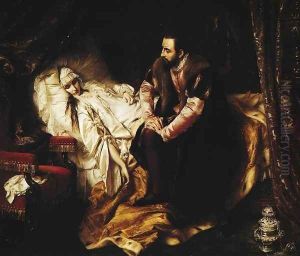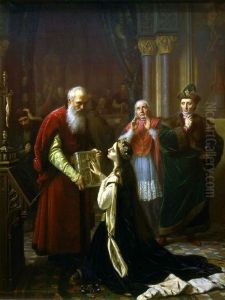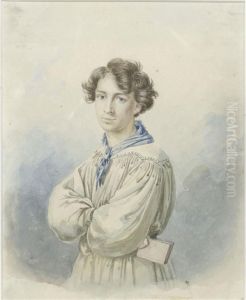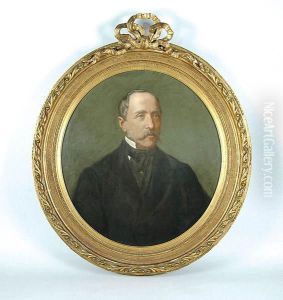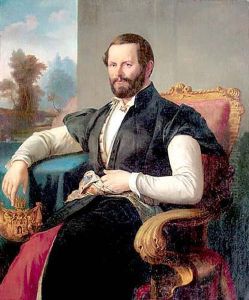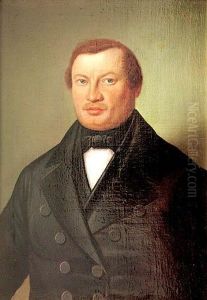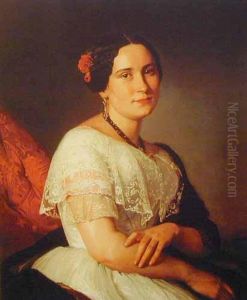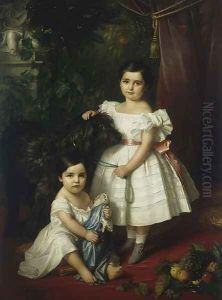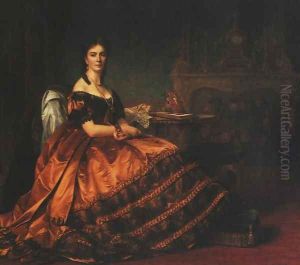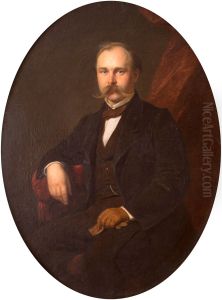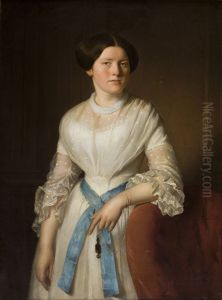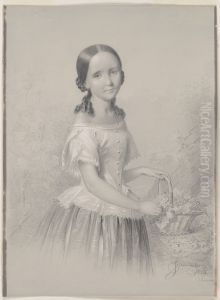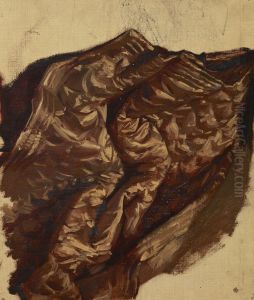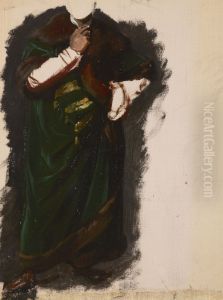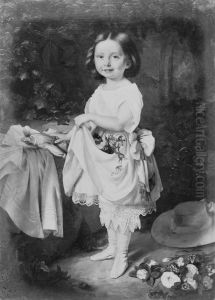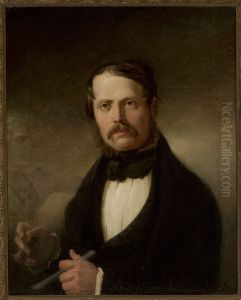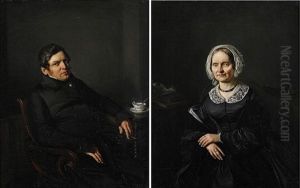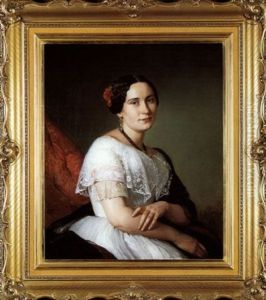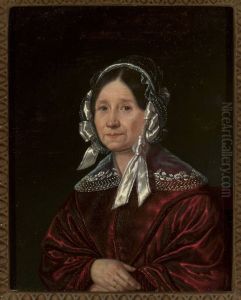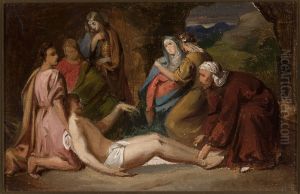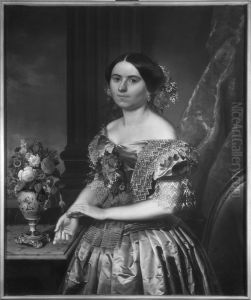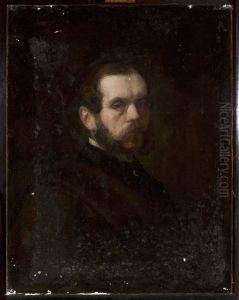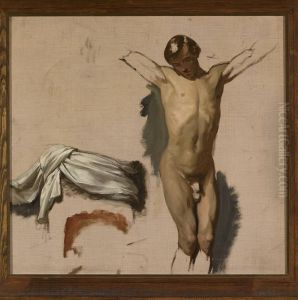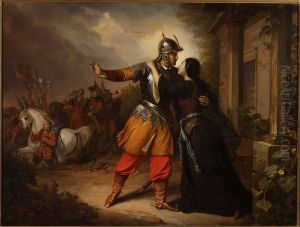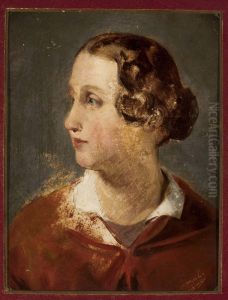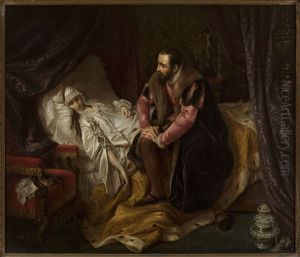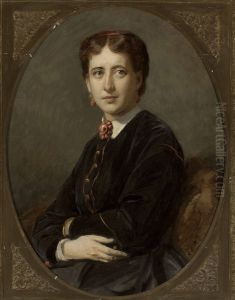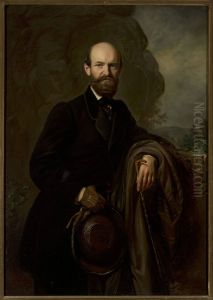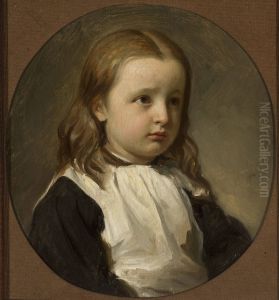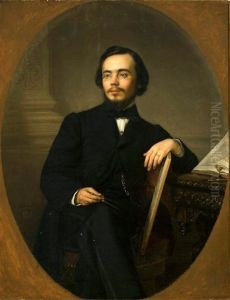Jozef Simmler Paintings
Jozef Simmler was a notable Polish painter, born on March 14, 1823, in Warsaw, then part of the Kingdom of Poland under Russian control. Simmler's talent for art was evident from an early age, and he pursued his passion with determination. He studied at the Warsaw School of Fine Arts, where he honed his skills in drawing and painting. Eager to further his education and experience the vibrant art scenes of Europe, Simmler traveled to Dresden and then to Munich, which was a major hub for artists in the 19th century. His time in Munich was particularly formative, allowing him to study under the guidance of prominent artists and immerse himself in the Romanticism movement, which deeply influenced his style.
Simmler's work is characterized by its emotional depth, attention to detail, and a strong emphasis on realism, which was a departure from the more classical and idealized forms prevalent in earlier periods. He is perhaps best known for his portraits and historical paintings, through which he explored themes of Polish national identity and history, reflecting the broader Romantic interest in nationalism and the individual's relationship to history. His most celebrated work, 'Death of Barbara Radziwiłłówna', painted in 1860, is a masterful representation of the tragic death of the 16th-century Polish queen, showcasing Simmler's skill in capturing emotional intensity and historical detail.
Despite his success, Simmler's life was marked by personal tragedies, including the loss of his wife and children, which cast a shadow over his later years. Nevertheless, he continued to paint and contribute to the Polish art scene until his death on March 1, 1868, in Warsaw. Today, Jozef Simmler is remembered as a key figure in the Polish Romantic movement, and his works are celebrated for their contribution to Polish national culture and history. His legacy is preserved in museums and collections in Poland and abroad, where his paintings continue to inspire admiration and respect for his artistic achievements.

